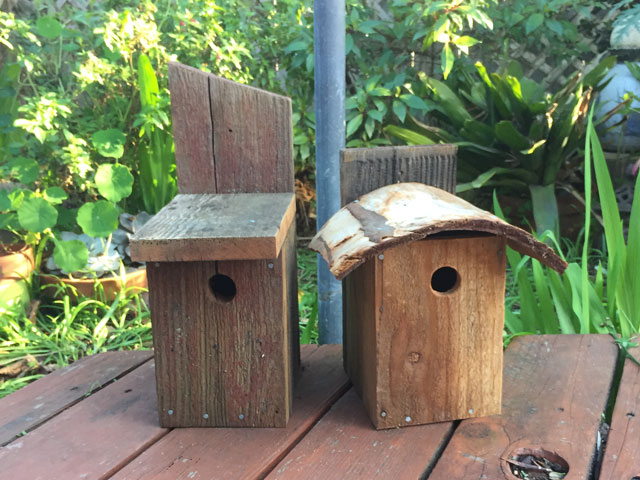Inviting the Small Folk
Once upon a time there was California coastal chaparral habitat that extended from the end of the Marina Beach dunes to what was once Fort Ord. It was a paradise for chaparral birds. The housing tracts built in the 60’s quickly erased coyote brush, coast live oaks, manzanita, black sage, coffeeberry, toyon, poison oak and many other native plants that once prevailed. The little birds had to work harder to find habitat. Perhaps they moved away to better feeding grounds.
In the 20 plus years I have embraced restoring native species to the backyard, the birds have returned. They returned with a vengeance. This tiny plot with its native plantings now offered cover, protection, food and prime nesting spots. Every spring offered incredible bird watching opportunities as the birds vied for food in the intensive search to feed hungry brood. This is no joke. Last year this garden supported Mockingbirds, Blue Jays, California Towhees, Hooded Orioles, Hummingbirds, and the Bewick’s wrens. This is not an exaggeration – all of these birds had nests in the garden or within striking distance. There were several other birds that visited as well, but I could never confirm that they had nests locally.

Wildness had returned to the suburban cul-de-sac. The arrival of the Bewick’s Wren sanctioned my efforts in restoring habitat. If you are not familiar with this wren; they are very small with nondescript gray coloring and a very large voice. I spent weeks trying to identify the owner of the trilling early morning song that notified dawn. Could this enchanting tiny bird really be the source?
So I did some reading and found that this bird thrives in chaparral/coast oak woodlands. Bewick’s wrens are very shy (vigilant!) and nervous birds with expressively twitchy tails. They have a distinct scolding voice that is often the only clue to their whereabouts. They can raise 1-2 clutches in the spring. They do not migrate on the Central Coast and eat LOTS OF INSECTS. Motivated by this information I found the Cornell Lab of Ornithology website. This is an amazing resource for bird identification, song recordings, and plans for birdhouses.

Here is the birdhouse plan link for the Berwick’s Wren. https://nestwatch.org/learn/all-about-birdhouses/birds/bewicks-wren/
The key features on this birdhouse includes a moveable side panel for cleaning and a sized hole that is too small for pesky house sparrows to move in. There are further instructions on hole sizing to accommodate other small birds that you may want to attract into the garden.
This Berwick’s wren takes a early evening sand bath after the chickens have headed for the roost
Last year the wrens built 3 nests and raised 2 broods. One nest was quickly abandoned after they determined that the mailbox was too busy a place for a nest. One nest was in a home made birdhouse and the last nest was on top of the motion detector light on the front walk. This year will have 3 nest boxes ready for occupation and it will be interesting to see if any chickadees, titmice or other small birds move in too.
